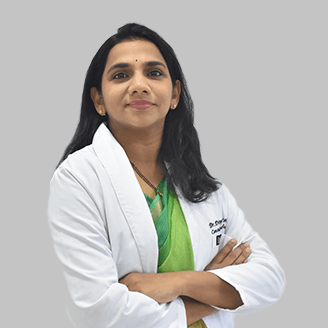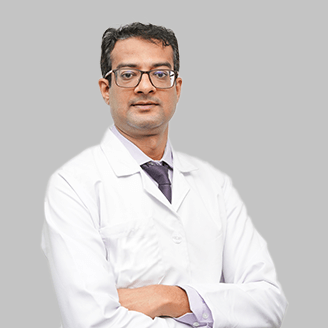-
Doctors
-
Specialities & Treatments
Centre of Excellence
Specialties
Treatments and Procedures
Hospitals & Directions HyderabadCARE Hospitals, Banjara Hills CARE Outpatient Centre, Banjara Hills CARE Hospitals, HITEC City CARE Hospitals, Nampally Gurunanak CARE Hospitals, Musheerabad CARE Hospitals Outpatient Centre, HITEC City CARE Hospitals, Malakpet
HyderabadCARE Hospitals, Banjara Hills CARE Outpatient Centre, Banjara Hills CARE Hospitals, HITEC City CARE Hospitals, Nampally Gurunanak CARE Hospitals, Musheerabad CARE Hospitals Outpatient Centre, HITEC City CARE Hospitals, Malakpet Raipur
Raipur
 Bhubaneswar
Bhubaneswar Visakhapatnam
Visakhapatnam
 Nagpur
Nagpur
 Indore
Indore
 Chh. Sambhajinagar
Chh. SambhajinagarClinics & Medical Centers
Book an AppointmentContact Us
Online Lab Reports
Book an Appointment
Consult Super-Specialist Doctors at CARE Hospitals

Tummy Tuck
Tummy Tuck
Tummy Tuck Surgery or Abdominoplasty in Hyderabad, India
The tummy tuck, or abdominoplasty, is a cosmetic surgical procedure used to change the appearance of the abdomen.
During a tummy tuck, the abdomen is removed from excess skin and fat. In addition to the abdominal fascia, sutures are usually used to tighten the connective tissue in the abdominal area. A more toned look is achieved by repositioning the remaining skin.
The team of plastic surgeons at CARE Hospitals will explain all your options and address all your concerns, including costs and complications. In addition to treating patients with reconstructive and cosmetic surgical needs, the hospital's plastic surgeons work closely with doctors of other specialties. Every CARE Hospitals patient has access to the same level of service, facilities, and technology offered to cosmetic surgery patients.
If you are concerned about excess fat or skin around your belly button or if your lower abdominal wall is weak, you may want to consider a tummy tuck. Boosting your self-image is also achievable with a tummy tuck.
Why it's done
The reasons for abdominal fat, skin elasticity problems, or weakened connective tissue are many. They include:
-
Weight changes that are significant.
-
During pregnancy.
-
C-sections or other abdominal surgeries.
-
Ageing.
-
Natural body type.
During a tummy tuck, excess skin and fat can be removed and weak fascia can be tightened. It can be helpful to get rid of stretch marks and extra skin under the belly button and in the lower abdomen. Stretch marks in areas other than the belly can be repaired by a tummy tuck. Depending on your plastic surgeon's skills, your C-section scar may be incorporated into your tummy tuck scar if you've previously had one. Tummy tucks are sometimes done in conjunction with breast surgery and other body contouring cosmetic procedures. In case you've had liposuction to remove fat from your abdomen, you may decide to undergo a tummy tuck because liposuction removes just the fat and the tissue under the skin, not the excess skin. There are some people who don't benefit from a tummy tuck. Listed below are some reasons your doctor might warn you against a tummy tuck. If you have to;
-
Reduce your weight significantly.
-
Consider becoming pregnant one day.
-
Diabetics and heart patients often suffer from chronic illnesses.
-
Body mass index suggests that they are obese.
-
Smoke.
-
Smokers may exhibit significant scarring following past surgery.
Risks
Several risks are associated with a tummy tuck, including;
-
The seroma is a collection of fluid underneath the skin. Excess fluid can be reduced by leaving drainage tubes in place after surgery. In addition, the doctor might use a needle and syringe to remove fluid after surgery.
-
Poor healing of the wound. It is possible that the incision line does not heal properly after surgery. You may be prescribed antibiotics for the prevention of infection during and afterwards.
-
Scarring that is not expected. Tummy tucks leave a permanent scar, but this scar is typically hidden along the bikini line. It varies in length and visibility depending on the patient.
-
Damage to the tissue. You may experience some damage or death to fatty tissue within your skin during a tummy tuck. This is made more likely if you are a smoker. A surgical touch-up procedure may be required depending on the size of the area.
-
Sensational changes in the skin. Repositioning your abdominal tissues during a tummy tuck can cause nerve damage to the abdomen and, in rare cases, the upper thighs. You may experience some numbness or decreased sensation. After the procedure, it usually subsides.
A tummy tuck poses the same risks as any other type of major surgery, such as bleeding, infection, and anaesthesia-related problems.
Preparation
Plastic surgeons will advise you about tummy tucks. During your first appointment, the plastic surgeon will probably:
-
Take a look at your medical history - Make sure you are prepared to discuss any medical conditions you currently have and have had in the past. Please discuss your current medications and any recent surgery you have undergone. Make sure your doctor is aware of any medication allergies. The doctor will likely ask you detailed questions about your weight gain and loss if you want a tummy tuck because of weight loss.
-
Have a physical examination - The doctor will examine your abdomen in order to determine your treatment options. You may be asked to provide pictures of your abdomen to your doctor.
-
Be clear about your expectations - What do you expect your appearance to be after the procedure and why do you want a tummy tuck. Be sure to find out what the benefits and risks of the procedure are, including the possibility of scarring. A previous abdominal operation might limit how the procedure goes.
Before the procedure
In terms of a tummy tuck, you have a number of options depending on your goals and how drastic you want the change to be. A tummy tuck typically involves your plastic surgeon making incisions in a horizontal oval or elliptical pattern to remove most of the skin and fat between your belly button and pubic hair. Over the abdominal muscles, the fascia is sutured so that it is permanently tightened.
Incision length and shape will depend on the amount of excess skin removed as well as the type of procedure. A scar will be left along the natural crease of the bikini line along the incision above the pubic hair.
As well, the skin around your belly button will be repositioned by your plastic surgeon. A small incision will be made to remove the belly button, which will then be sutured in its normal position.
An antibiotic might be administered to prevent infection during the procedure. About two to three hours are usually required for the procedure.
After the procedure
In the case of a tummy tuck, you will likely have a surgical dressing over the abdominal incision and belly button. An incision site may be fitted with small tubes to drain any excess blood or fluid.
As soon as the first day following a tummy tuck, members of your health care team will help you walk to prevent blood clots from forming.
Pain medication is likely to be prescribed to you. After surgery, you will likely experience swelling.
After surgery, the drains will likely remain in place for several days. If you do not know how to empty and care for your drains, ask your doctor or other health care team, member. While you are still wearing the drains, you may need to take an antibiotic.
For a short period after your tummy tuck, your doctor may prescribe a blood thinner. An abdominal binder (supportive garment) will remain on your body for approximately six weeks after your tummy tuck. In addition to preventing fluid accumulation, this garment provides abdominal support. You should discuss scar care with your doctor.
You will need to be careful when moving around after a tummy tuck for the first six weeks. In order to prevent the reopening of the wound, you should avoid positions that strain your incision line - for instance, quickly bending at the waist.
Follow-up visits should be scheduled regularly. Consult your doctor about how frequently you should visit.
The Procedure of Tummy Tuck
The duration of this surgery can range from one to five hours. Typically, it is performed as an outpatient procedure. In case you need to travel to a facility for the surgery, you may be required to stay overnight at a hotel. There might also be a consideration for performing liposuction simultaneously.
You will be administered general anesthesia, which will induce sleep during the procedure. It's essential to have a companion who can drive you back home. If you live alone and are discharged after the surgery, it's crucial to have someone stay with you, at least for the initial post-operative night.
There are different types of abdominoplasty procedures:
- Complete Abdominoplasty: This is suitable for those requiring extensive correction. An incision is made along the bikini line, aligned with the pubic hair. The scar's length depends on the amount of excess skin. The surgeon will manipulate and shape the skin and muscles as necessary. Additionally, an incision around the navel is made to free it from surrounding tissue. Drainage tubes may be used, which will be removed as per your surgeon's discretion.
- Partial or Mini-Abdominoplasty: Mini-abdominoplasty involves shorter incisions and is typically performed on individuals with less excess skin. Your belly button usually remains in place during this procedure. The skin is separated between the incision line and the belly button. This surgery typically lasts one to two hours, and drainage tubes may or may not be used.
- Circumferential Abdominoplasty: This procedure extends to the back area. When there's excess fat in both the back and abdomen, liposuction of the back or circumferential abdominoplasty may be recommended. The latter allows for the removal of both skin and fat from the hip and back areas, enhancing the body's shape from all angles.
After a partial or complete tummy tuck, the incision site is sutured and bandaged. Your surgeon might recommend wearing an elastic bandage or compression garment post-surgery. It's vital to adhere to your surgeon's instructions regarding wearing the garment and caring for the bandage. Additionally, your surgeon will guide you on the most comfortable sitting or lying positions to minimize discomfort.
For those who are highly active, strenuous exercise must be limited for four to six weeks. The typical duration off work post-surgery is about a week to ensure proper recovery. Your doctor will provide guidance throughout the healing process.
Our Doctors
-

Dr. Annamaneni Ravi Chander Rao
MBBS, MS (General Surgery), MCh (Plastic Surgery)
Plastic Surgery
View More -

Dr. Dasari Madhu Vinay Kumar
MBBS, MS (PGI), MCh (PGIMER, CHD)
Plastic Surgery
View More -

Dr. Deepthi. A
MBBS, MS (General Surgery) , MCh (Plastic Surgery)
Plastic Surgery
View More -

Dr. Divya Sai Narsingam
MS, MCh (Plastic surgery)
Plastic Surgery
View More -

Dr. Prachir Mukati
MBBS, MS, MCh (Plastic and Reconstructive Surgery)
Plastic Surgery
View More -

Dr. Shameem Unnisa Shaikh
MBBS, MS (General Surgery)
General Surgery, Plastic Surgery
View More -

Dr. Subhash Sahu
MS, MCh
Plastic Surgery
View More
Frequently Asked Questions
Still Have a Question?

